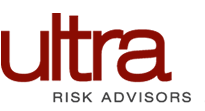As expected, there are a tremendous amount of changes taking place in healthcare right now as the Affordable Care Act goes into effect. Patient home, accountable care organization (ACO) and other clinical integration models are top of mind these days. And with these changes there are bound to be new potential risks to be considered.
Hospitals and health systems are tightening their belts as they are getting squeezed from all sides and revenues are threatened. Survival tactics include integration of a number of healthcare services, acquisition of physician practices and adding value at all levels of healthcare delivery.
Physician practices are also taking survival measures and are merging with other same specialty groups or are forming multispecialty configurations.
One big area of change is the commoditization of primary care. Outpatient/urgent-care walk-in clinics staffed with nurse practitioners and/or physician assistants are popping up everywhere now as lower level primary care gets the drugstore chain treatment.
Many organizations are taking this to the next step and are building low-level primary care telemedicine models that are cellphone and i-Pad or tablet based.
Here’s how they work – a patient signs up for the service through the company’s website or through their employer’s healthcare program if available. The enrollee typically pays a one-time processing fee to sign up. Part of this fee goes to cover the cost of obtaining the enrollee’s medical records from their current primary care provider. Once enrollment is completed the service is available for use at any time thereafter. A patient may call the service for diagnosis and treatment of things like colds and flu, sinus infections, rashes, etc. A contracted physician or NP/ARNP for the telemedicine service reviews the patient’s medical records, asks pertinent questions, and then, if necessary, can FaceTime or Skype the patient to get a first-hand look at the problem.
For many of us who still remember Marcus Welby, M.D., this may seem a little crazy and a scary route to quality healthcare. But to a whole new generation of potential patients that have grown up with cellphones glued to their ears and lightning fast Internet speeds, this may seem like a normal, technology-driven evolution of a commodity that they may see as no different than purchasing a book on Amazon.
Only time will tell if the seemingly inherent risks involved with little or no direct patient contact will outweigh the convenience and cost savings. As the healthcare landscape changes so will the potential liability of the healthcare professionals. And that means that medical professional liability insurance companies will have to adapt accordingly – based on the risks associated with new, less personal ways of delivering healthcare.







COMMENTS
No comments yet. You should be kind and add one!
The comments are closed.